Sonya Wilson was five years old, zipping toy cars across the wood floors of her upstairs bedroom one night as the adults hung out downstairs. Suddenly she felt chills, a sensation she recognized as the presence of her twin sister.
Though her sister died a few days after birth, Sonya had always felt her near — this time as a warning.
“Someone’s footsteps were coming to me, and those footsteps were pissed off. I opened the window, climbed up to the roof of the house and stayed up on the roof. And at that moment, something inside of me changed.
“The outdoors became my safe haven. I saw the trees, the stars, the moonlit sky. The desert hills of Nevada. All of that became a part of me. And I got strength from the outdoors.”
Back then, that strength helped her survive the difficulties of growing up deaf in a time, school and home environment that offered very little support. Now, it compels her to help create space and connection for the Deaf community out on the trails, crags and mountaintops.
It’s a recent Wednesday afternoon, and Erin Matthews and I introduce ourselves and make small talk over Zoom until Sonya pops on. Sonya trusts Matthews as an American Sign Language (ASL) interpreter for interviews like this.
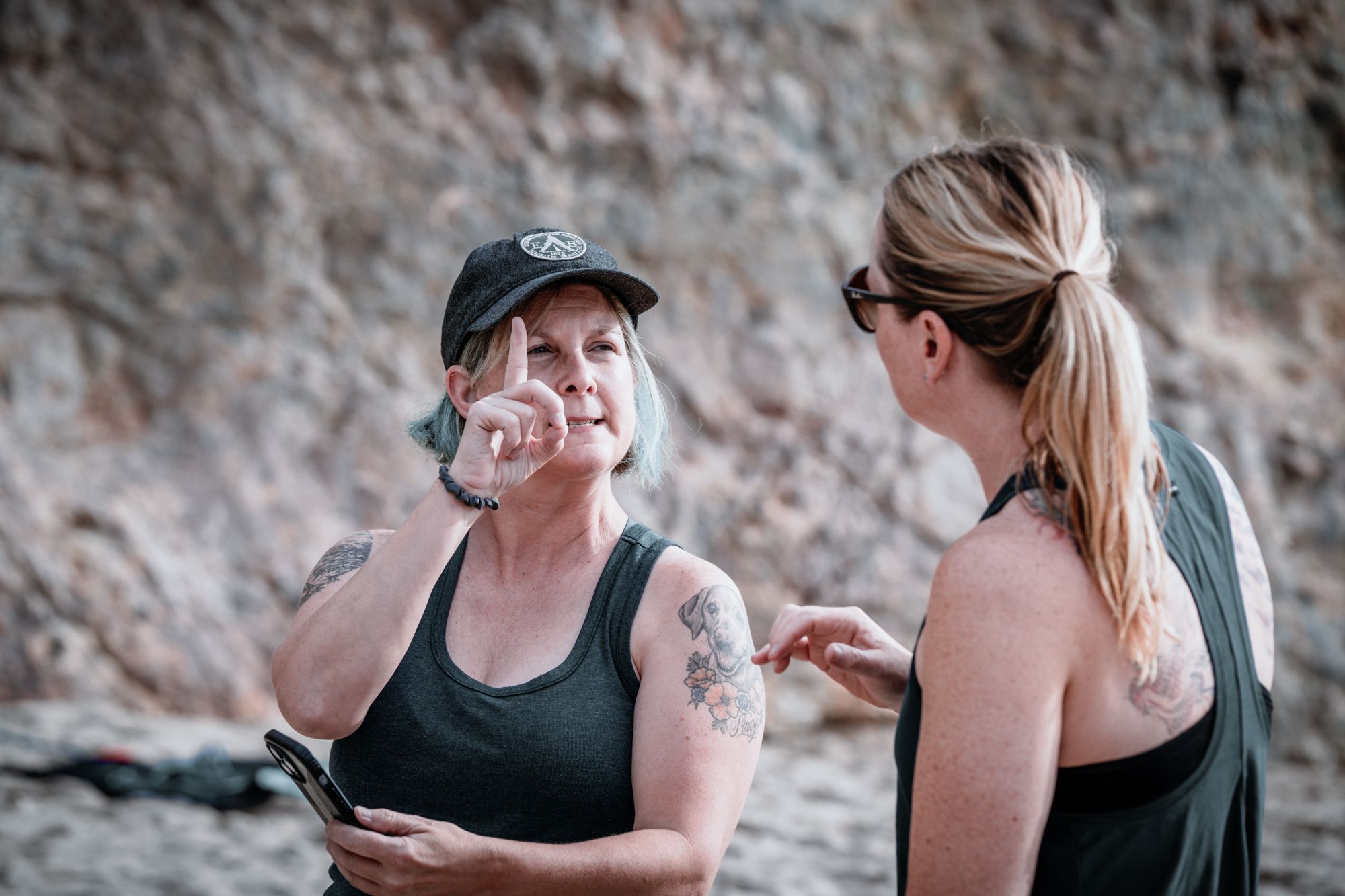
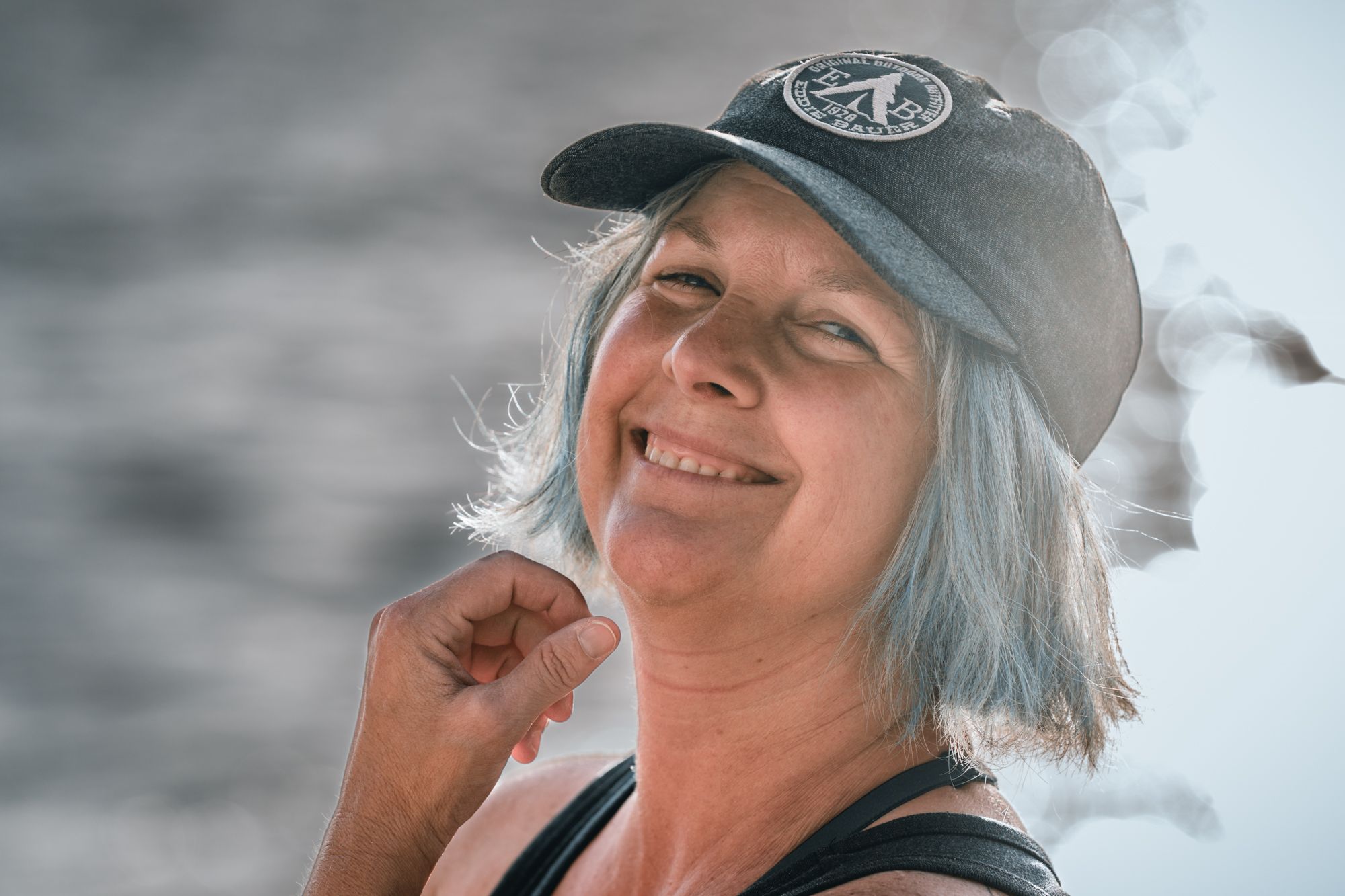
Sonya Wilson with ASL interpreter Erin Matthews at Point Dume, California. [Matthew Fults photos]
Plus, they’re friends who get together as part of the ASL Climbing Network, a community Sonya founded in 2012 for anyone who signs to gather for group climbs and camaraderie and to share wisdom, experiences and outdoor/life hacks.
When Sonya joins the call, she covers communication protocol right off the bat: “A lot of times, people look at the interpreter instead of the person they’re talking to. Avoid things like, ‘Tell her…’”
Always a teacher.
Sonya and her sister were born in Los Angeles in 1972. Sonya weighed just 1.5 pounds and spent months in the hospital as her tiny lungs and liver continued to develop.
Her grandmother was the first to suspect that she might be deaf — newborn hearing screenings wouldn’t become standard for another 20 years. During one visit to her grandmother’s horse ranch outside of Las Vegas, Sonya laid on a baby blanket spread out across the wooden planks of the front porch while her grandmother sat in a rocking chair nearby.
“She noticed that I’d turn my entire head as she’d rock because I could feel the vibrations through the floor. Then she’d stop to see how I’d react. Then she called my name using her voice, and I never turned my head and looked at her.”
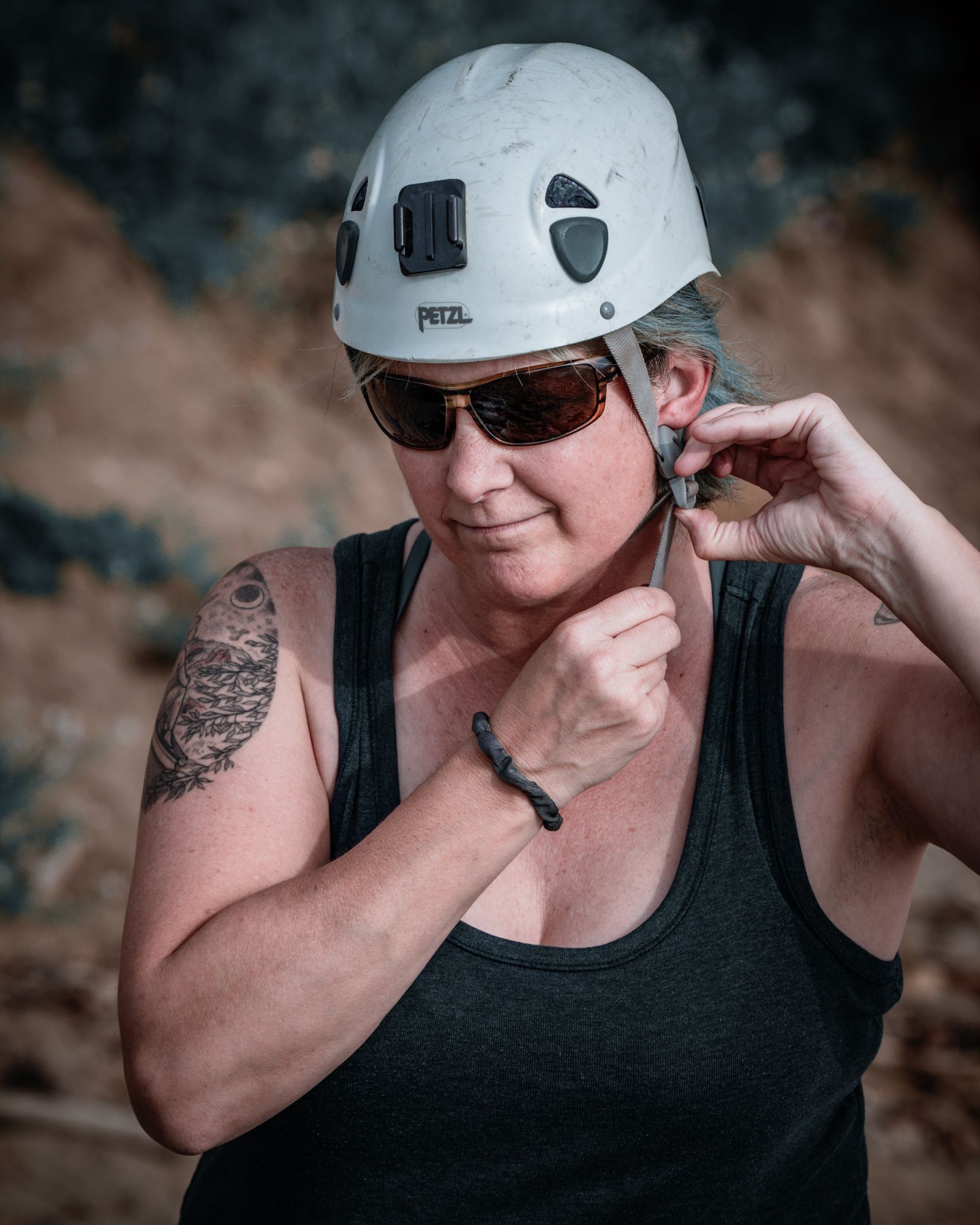
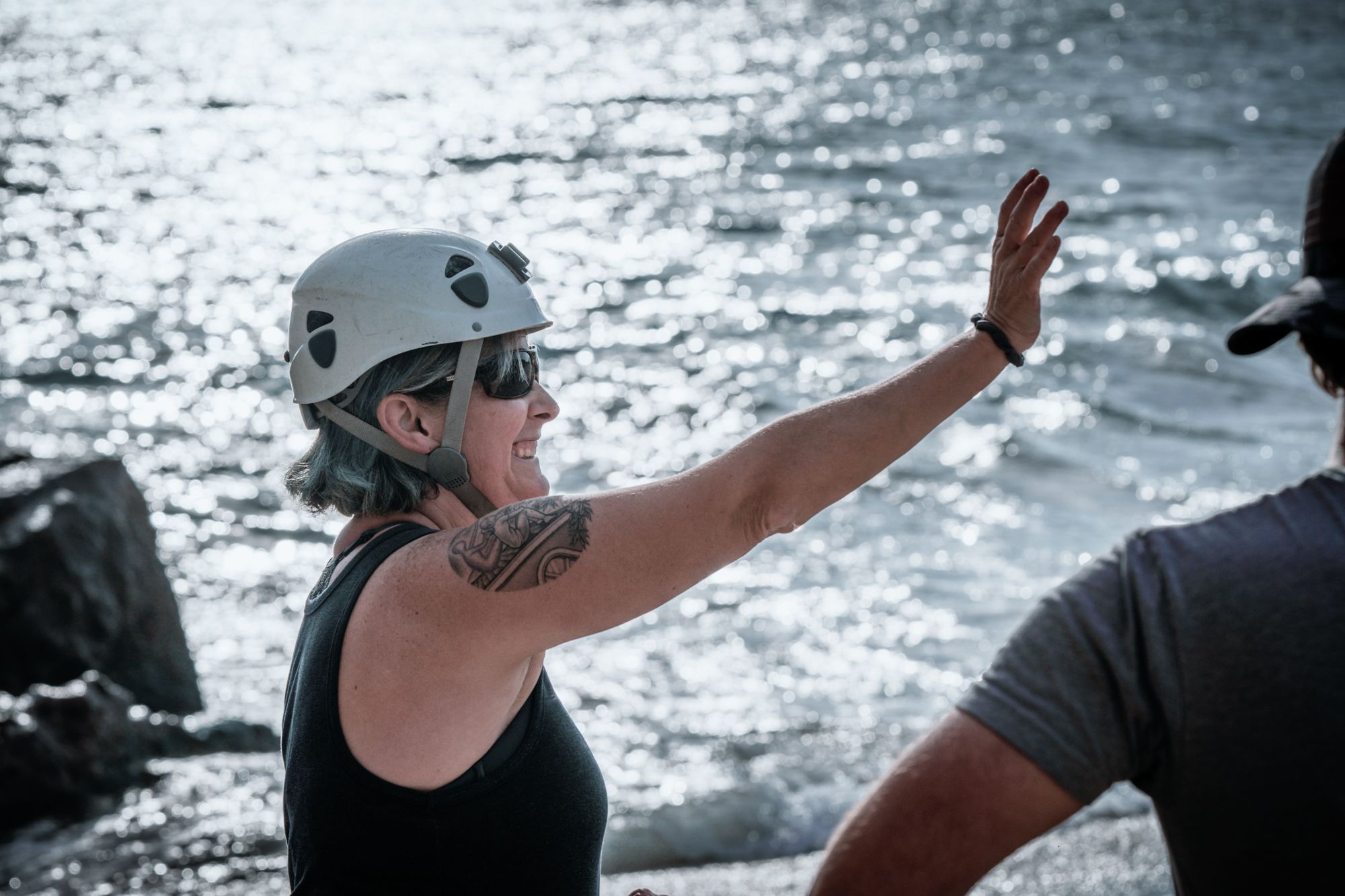
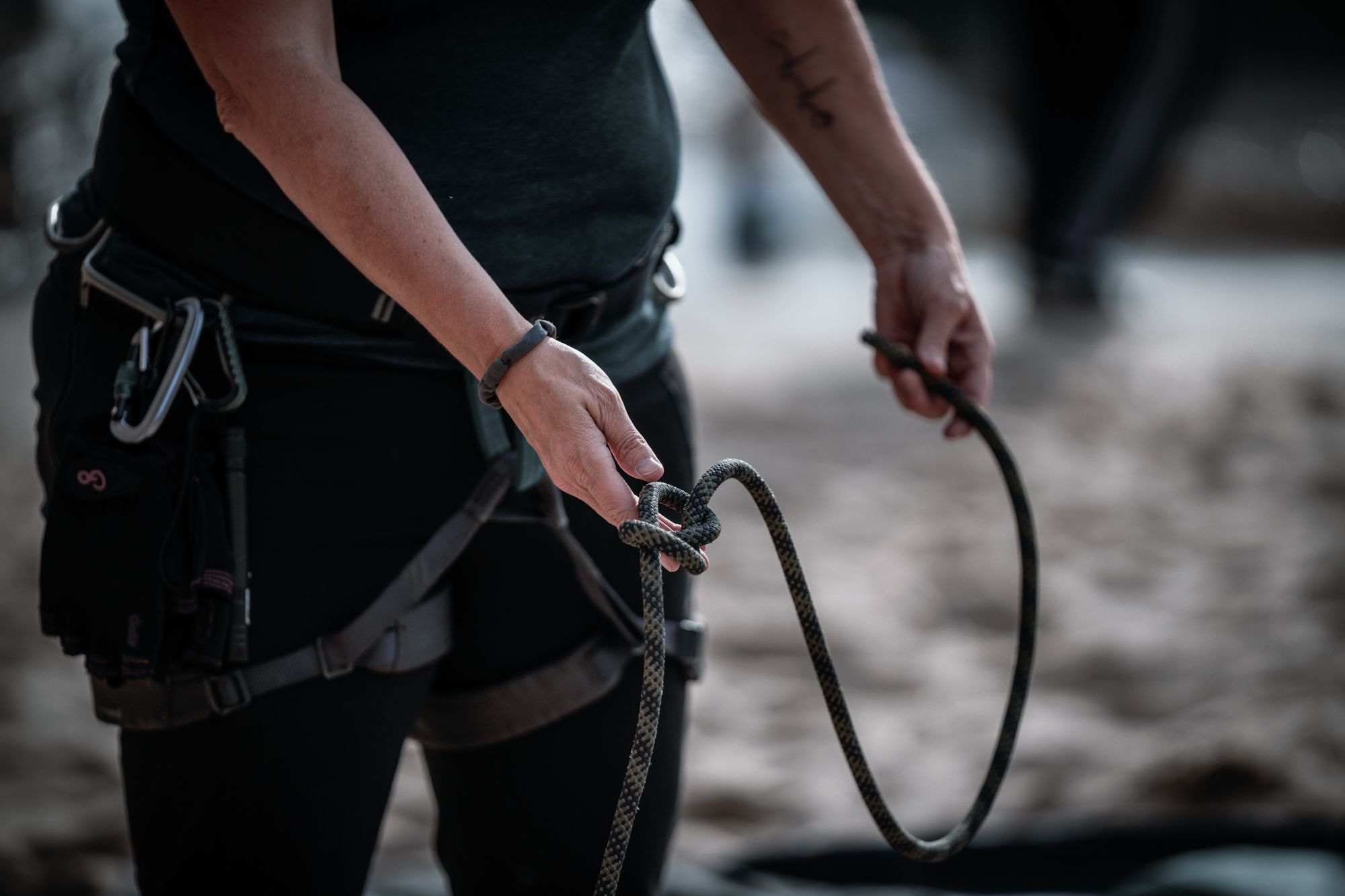
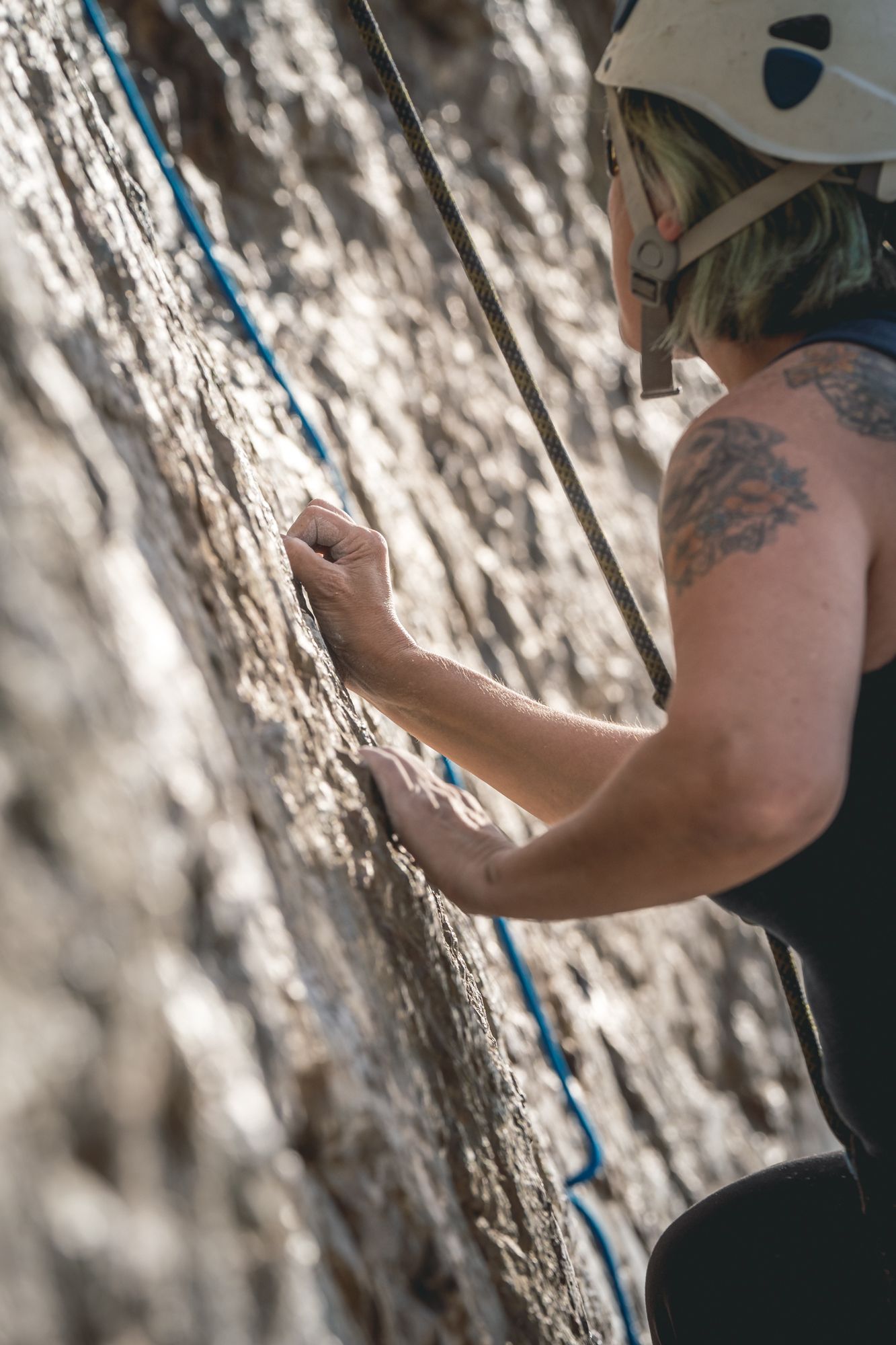
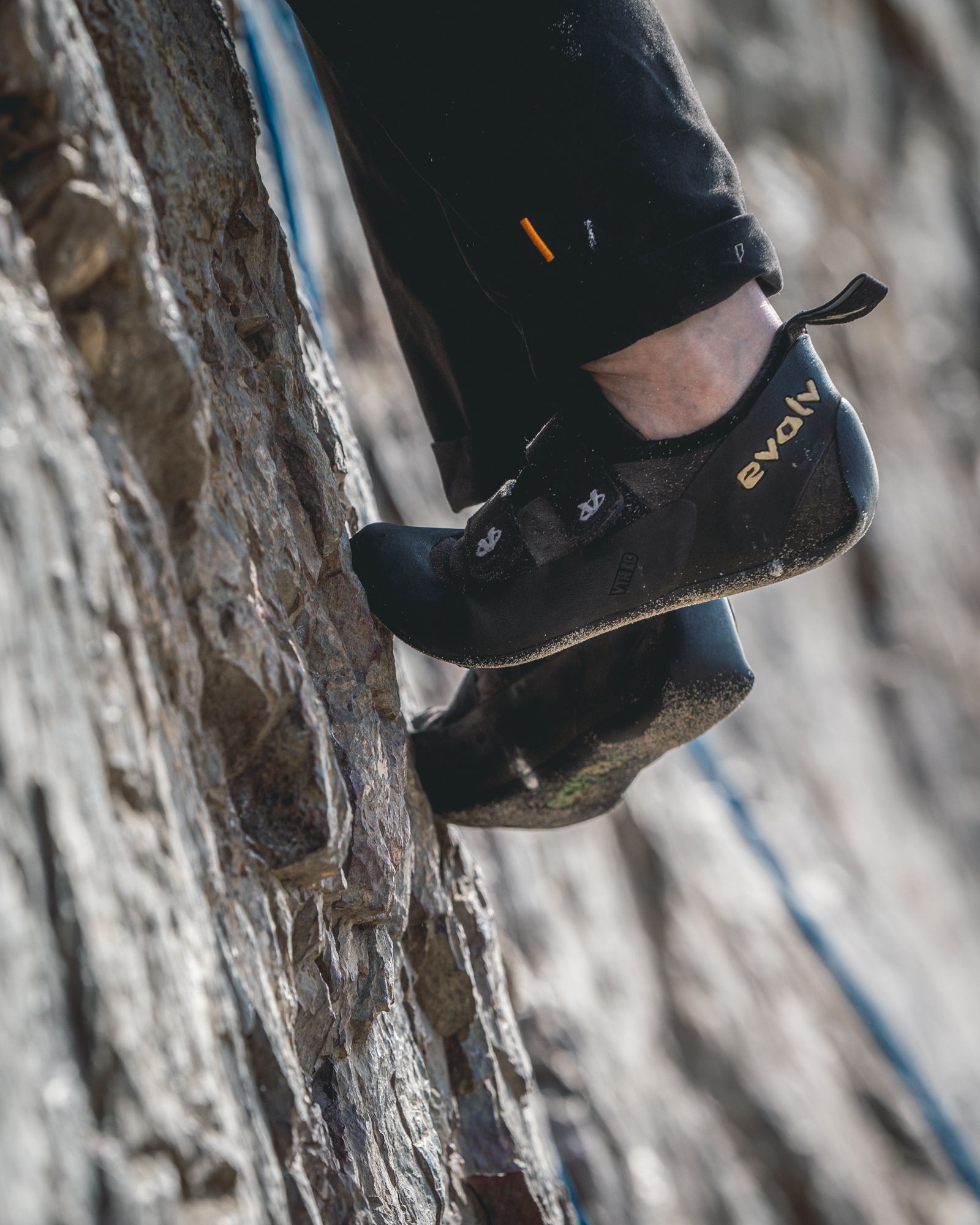
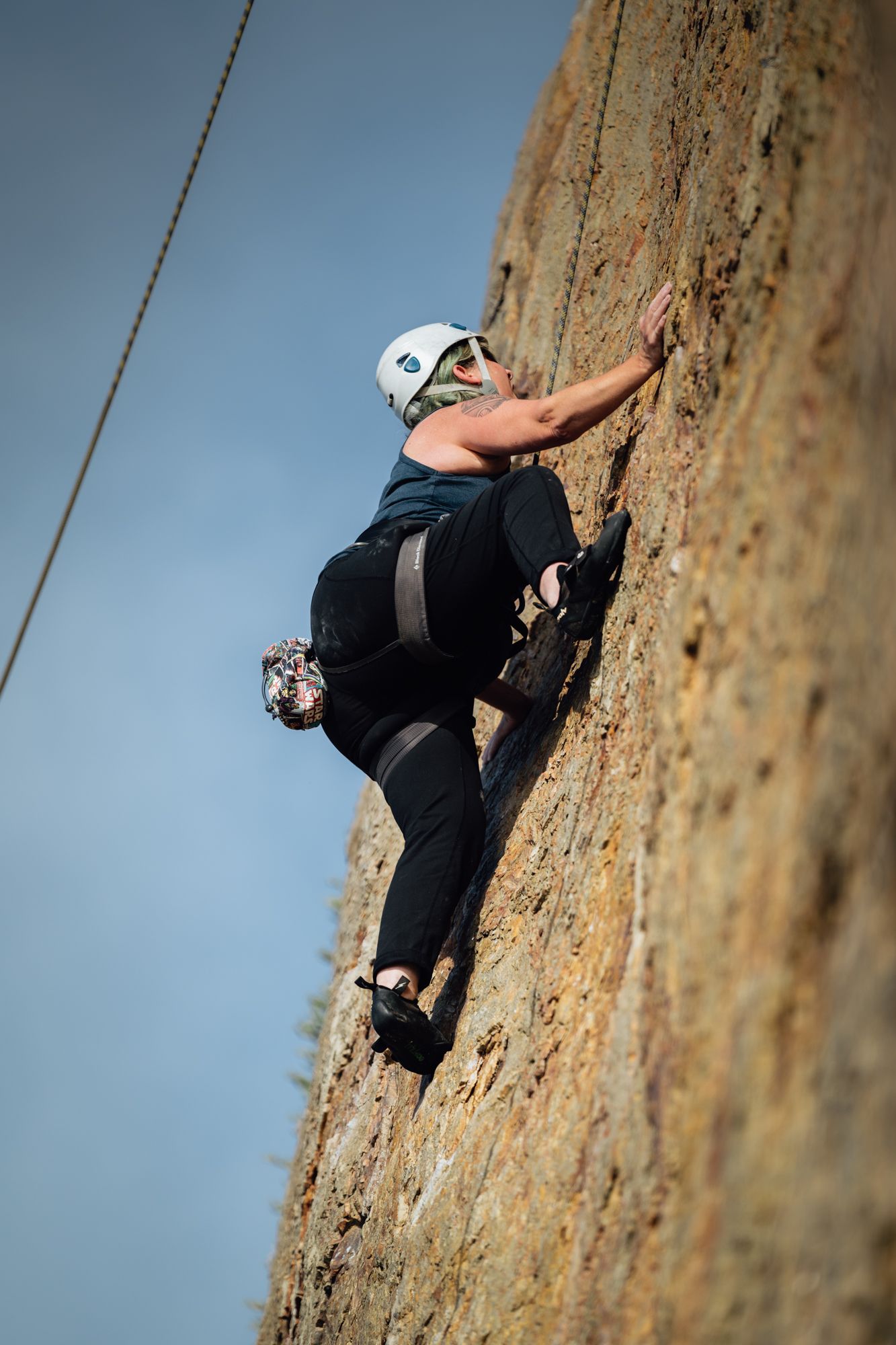
The granite face of Point Dume is 203 feet high. [Matthew Fults photos]
Sonya’s mom resisted the possibility but moved back home to be closer to the family when Sonya was two. Toddler years came and went, and still, Sonya and her mom couldn’t effectively communicate.
“When I was five, my grandmother got fed up with my mom, and my mom didn’t want to accept it.”
Her grandmother led her mom into the living room, where Sonya was watching Tom and Jerry. They turned the volume way up and then way down to see how she would react.
“When they turned the volume up really loud, I liked it because I could feel the vibrations. And when they turned it down, I was like, it’s fine, I’m still watching the action.”
Next, they started banging pots and pans. They were close enough that Sonya reacted to the shadows from their movement — a reaction that reinforced her mom’s everything-is-fine bubble. “See? She can hear!” But when they moved further away and banged the pots again, Sonya was still.
She couldn’t hear. She couldn’t speak. And when it came time to start school, she didn’t know many English words, even.
Eventually, a visit to an audiologist confirmed everything, and Sonya enrolled in a deaf and hard-of-hearing program that was “mainstreamed” within a traditional public school. The program was in one building on campus while all the other kids were in another.
The pro: Sonya finally met other kids like her, a dozen total. “They were my community and my family. We understood each other.”
The con: Signing was forbidden. “If there was a hearing teacher who caught us signing to each other, they would tie our hands behind our backs or to a chair.”
That hostility to signing was entrenched in schools around the world because of resolutions adopted at an educator gathering in 1880, now known as the Milan Conference. During that conference, attendees — none of them deaf — declared “the oral method” of teaching preferred over signs.
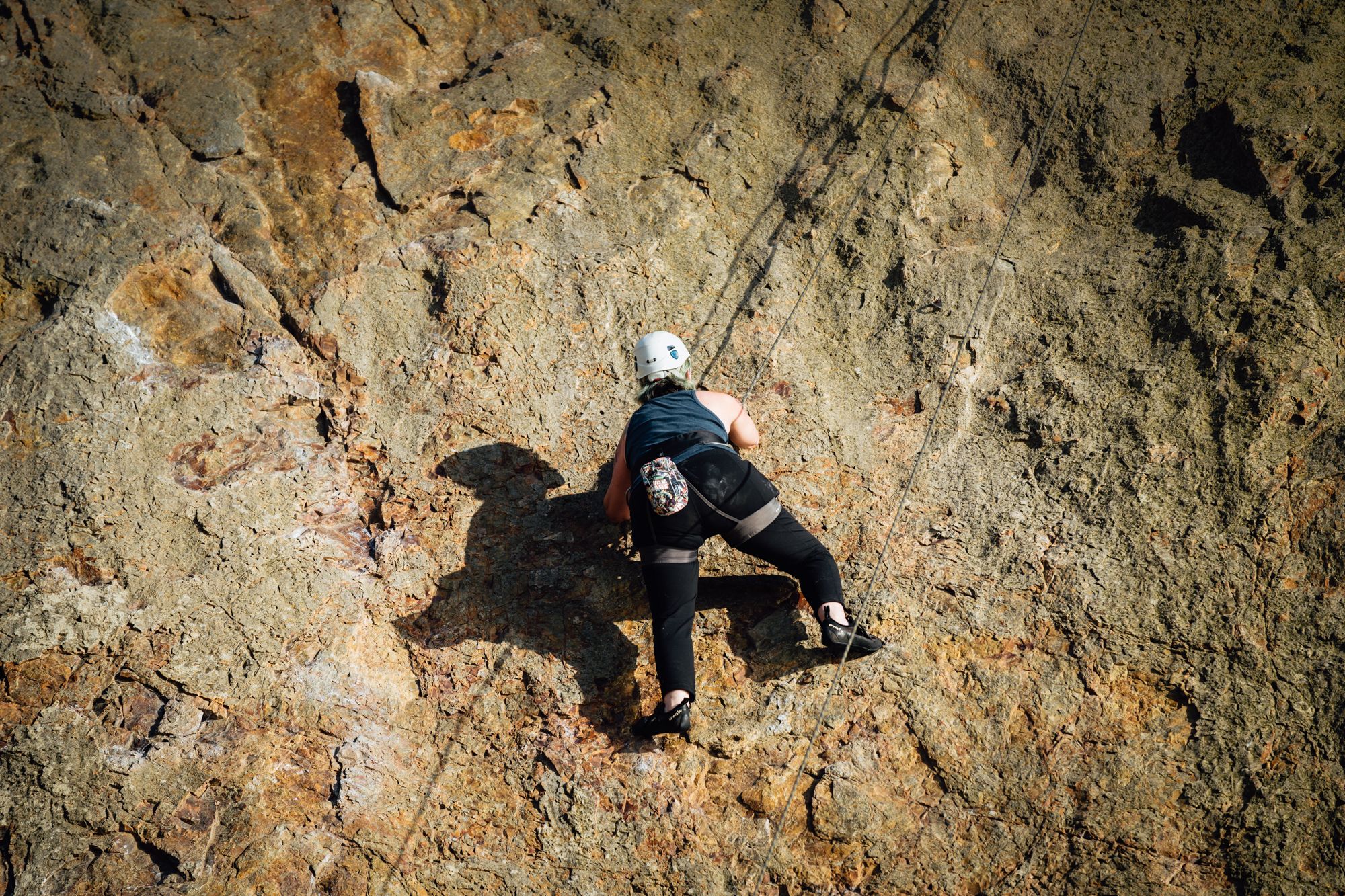
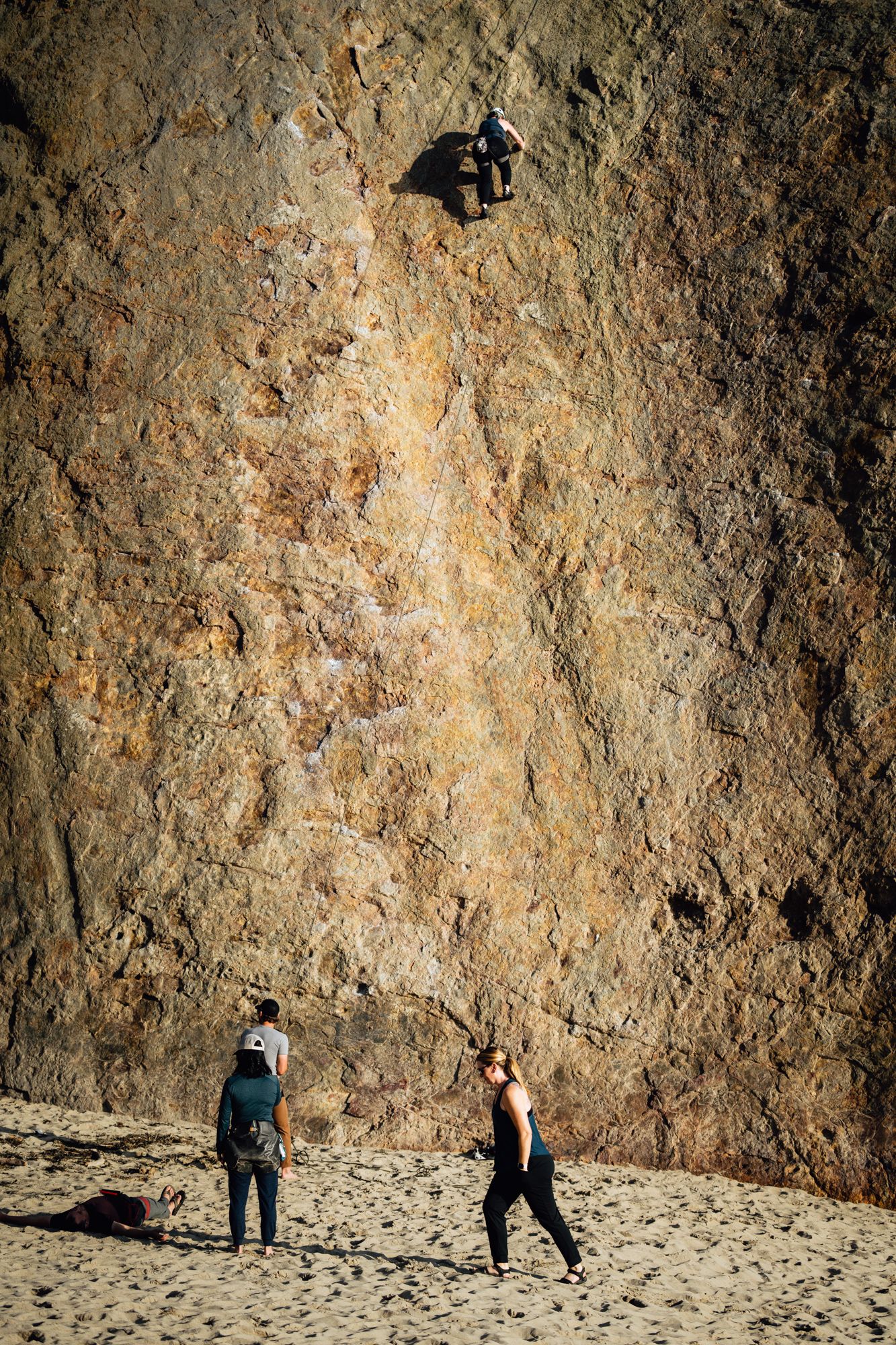
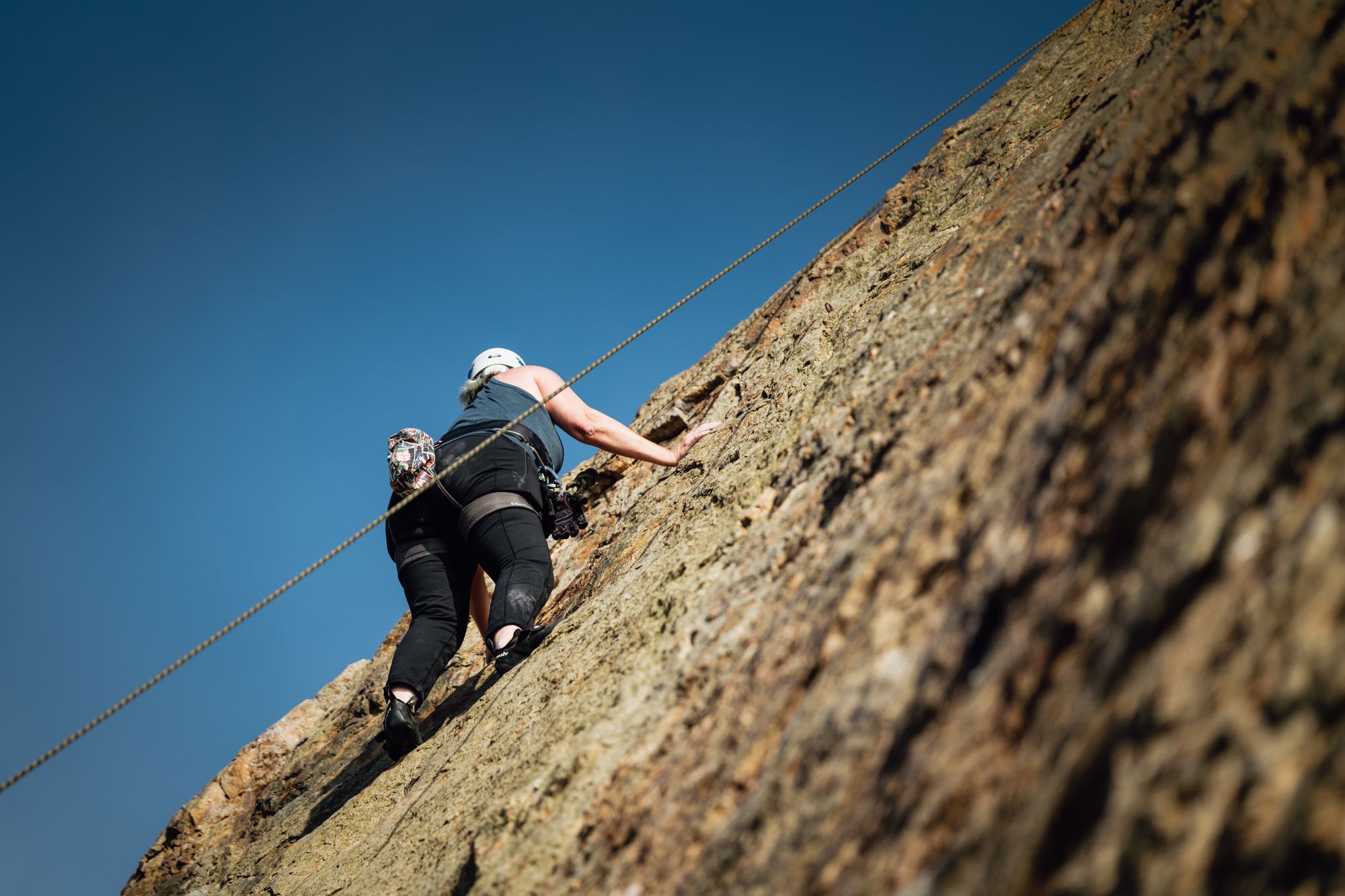
Sonya Wilson works her way up at Point Dume, California. [Matthew Fults photos]
The resolutions led schools to remove sign language from the curriculum and deaf teachers from teaching. Sonya was part of the last generation to be mainstreamed and forced to use devices, mimic hearing people, and communicate in English — a whole other language than the home signs she developed on her own or the ASL she had picked up on TV.
“The first time I saw a deaf adult, someone who was like me, I was seven,” she says. “I loved to watch TV, specifically Sesame Street, and I remember that moment seeing a deaf female adult, and the thrill was amazing. That changed my life. That gave me something I never understood: hope.”
That deaf female adult was Linda Bove, known as “Linda the librarian” on the show. Every week, Sonya learned from watching Linda, ran to school and shared with her friends. They looked forward to lunch breaks when they’d hide from hearing teachers so they could freely share stories, sign jokes and act out whatever was on their minds.
“That was our safe space. It was family. All of us had experienced some awful things at home, and there was no communication at home and no communication at school.”
She means that quite literally. She describes school as more of a daycare than a place of language and learning. And she and her mother never did really communicate with each other — a common dynamic. One study found that around 90% of deaf children are born to hearing parents, most of whom don’t use sign language.
So Sonya and her deaf friends connected with each other — and the outdoors. The Yuccas don’t demand. The canyons don’t judge.
“When I started to go outdoors, I would hide from my mom, just take off all the time. My deaf friends and I would jump the fence at school and take off into the desert and explore and have fun. We’d be hiking or biking or running around in Red Rock Canyon. There were no requirements for hearing, speaking or becoming someone else.”
The outdoors became even more essential when her world changed at age 11.
“My mom passed away, and I lost everything. All of my animals, my home, my deaf friends, my community. Everything was gone. My red rocks.”
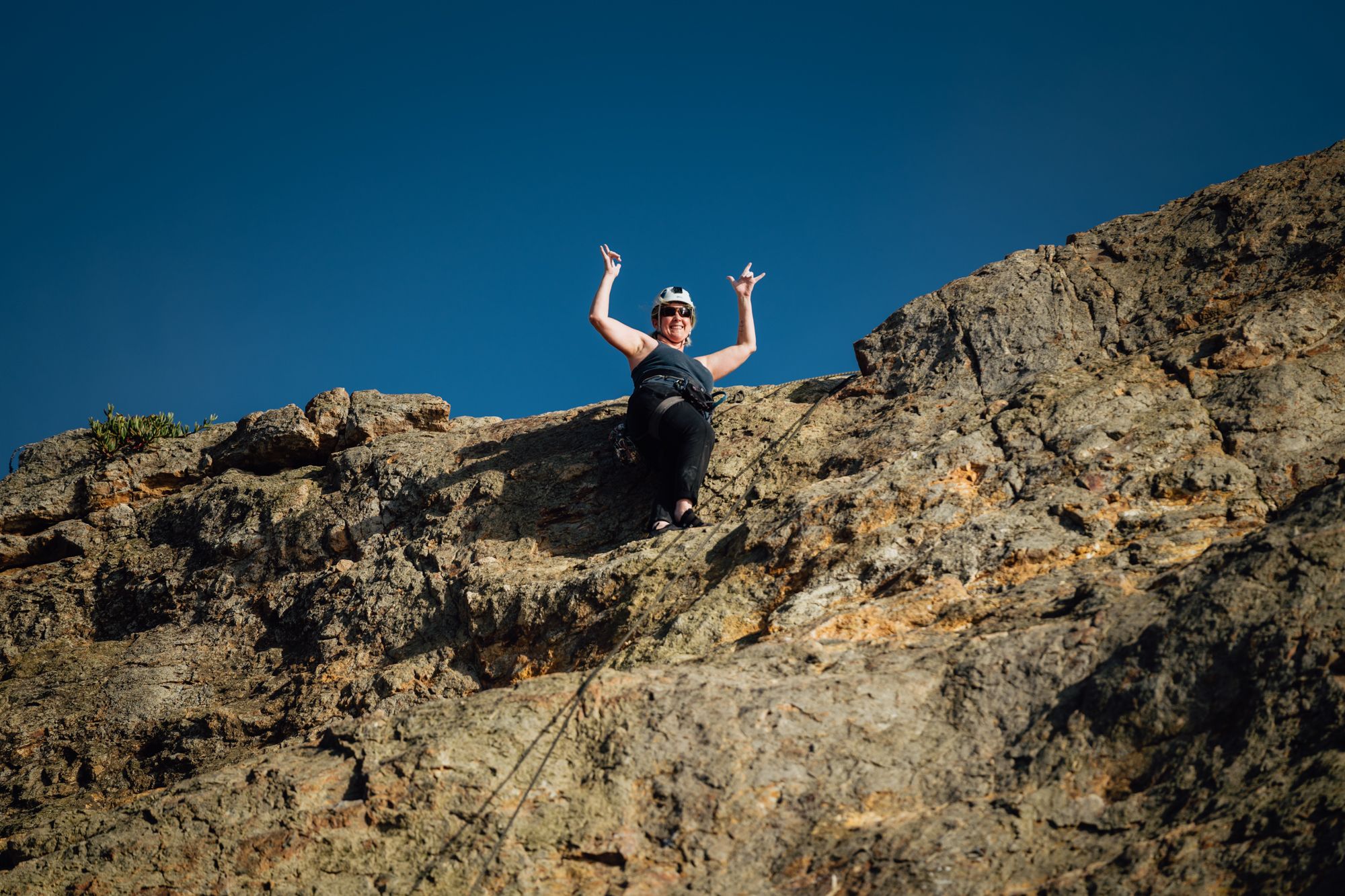
She moved back to L.A. to live with her mom’s sister and her family. They didn’t know each other well and couldn’t communicate at first, but they all did their best by using gestures.
And they camped with the family’s church group sometimes. Those outings didn’t have the roots of Sonya’s beloved red rocks or the magic of the annual summer trips to Yosemite with her mother (“she was caring and kind to me when in nature”), but they were still out in the vastness, and that was nice.
Back at home, Sonya’s aunt hired tutors for extra support while she attended traditional public schools. School had always been a struggle because of the language deficit she came in with and the language barrier overall, but she grinded her way through.
One of those tutors predicted that Sonya would become a teacher herself. She laughed then but, sure enough, went on to earn bachelor’s and master’s degrees from Azusa Pacific University. Sonya teaches ASL and Deaf culture at a suburban L.A. public high school where it is a world language that satisfies graduation requirements just like Spanish, Mandarin and other languages. Her students are a mix of deaf and hearing kids.
“I really love both communities being part of my ASL classes. It’s so much fun to see them communicate back and forth with each other.
“I also understand what it feels like to have language deprivation and not have resources or support because no one taught me. It was frustrating. I don’t want other students to experience that. I want to be able to provide support and encouragement so they can do anything they want to do and also learn how to give themselves what they deserve.”
She brings that same passion and advocacy to the outdoors. Why shouldn’t deaf people be able to take rock climbing courses? Or go on mountaineering excursions, attend clinics, or get certified as instructors?
All It takes is access, which isn’t always easy, but it doesn’t have to be hard, either. Access means a lot of things:
- Including (and budgeting for) interpreters at public events, festivals, classes, and other gatherings
- Providing presentation or informational content in print form at the time of the gathering — not afterward
- Making sure in-person or online content can be close captioned
- Making sure closed captioning includes the full experience, including environmental noise like the sound of a babbling brook or a cheering crowd
And it never hurts just to ask, “What works for you?”
Sonya climbs with deaf and hearing people all the time, whether in a small group or as part of a larger event that she organizes for the ASL Climbing Network. The key is agreeing on a communication system at the start.
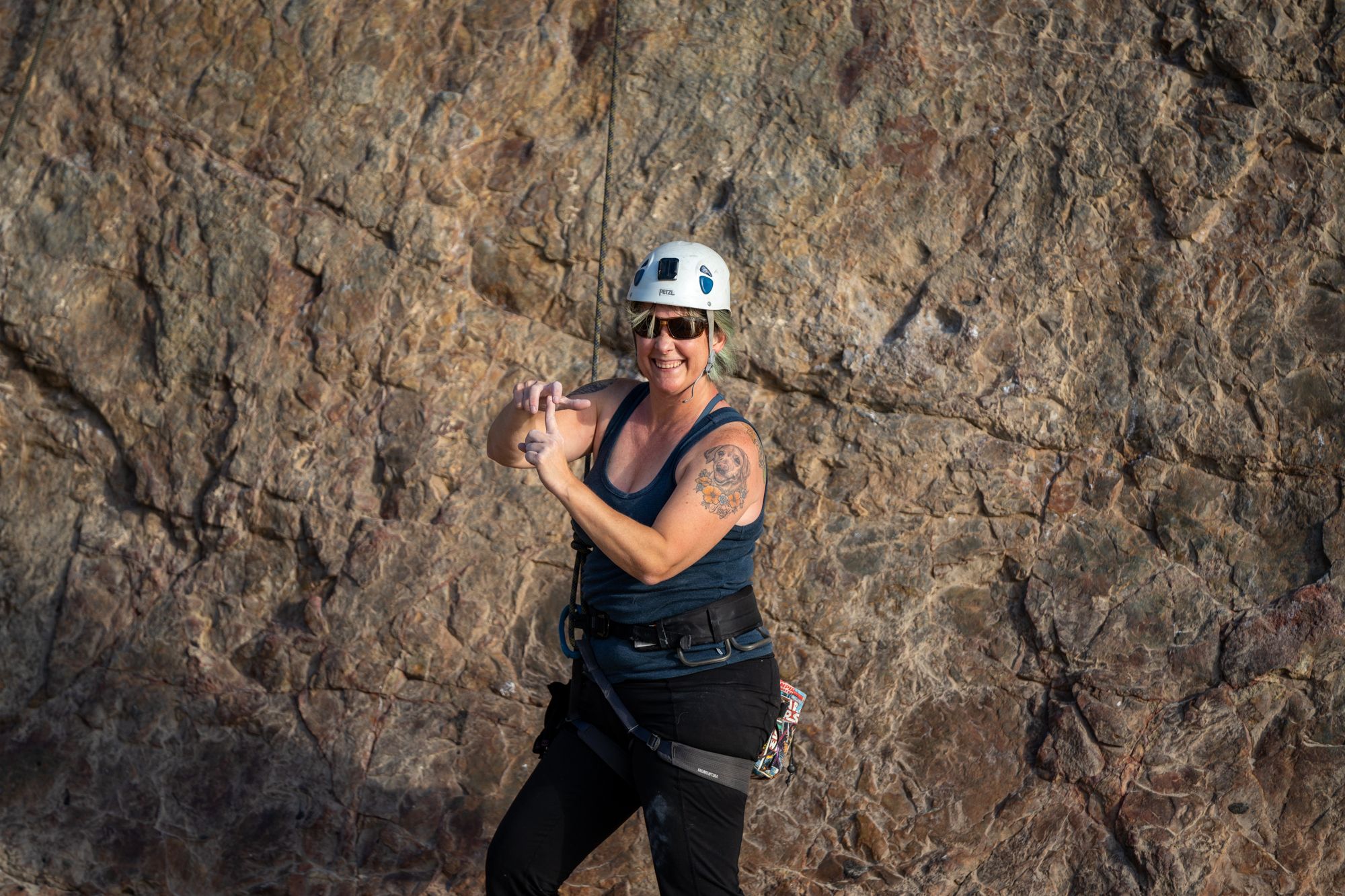
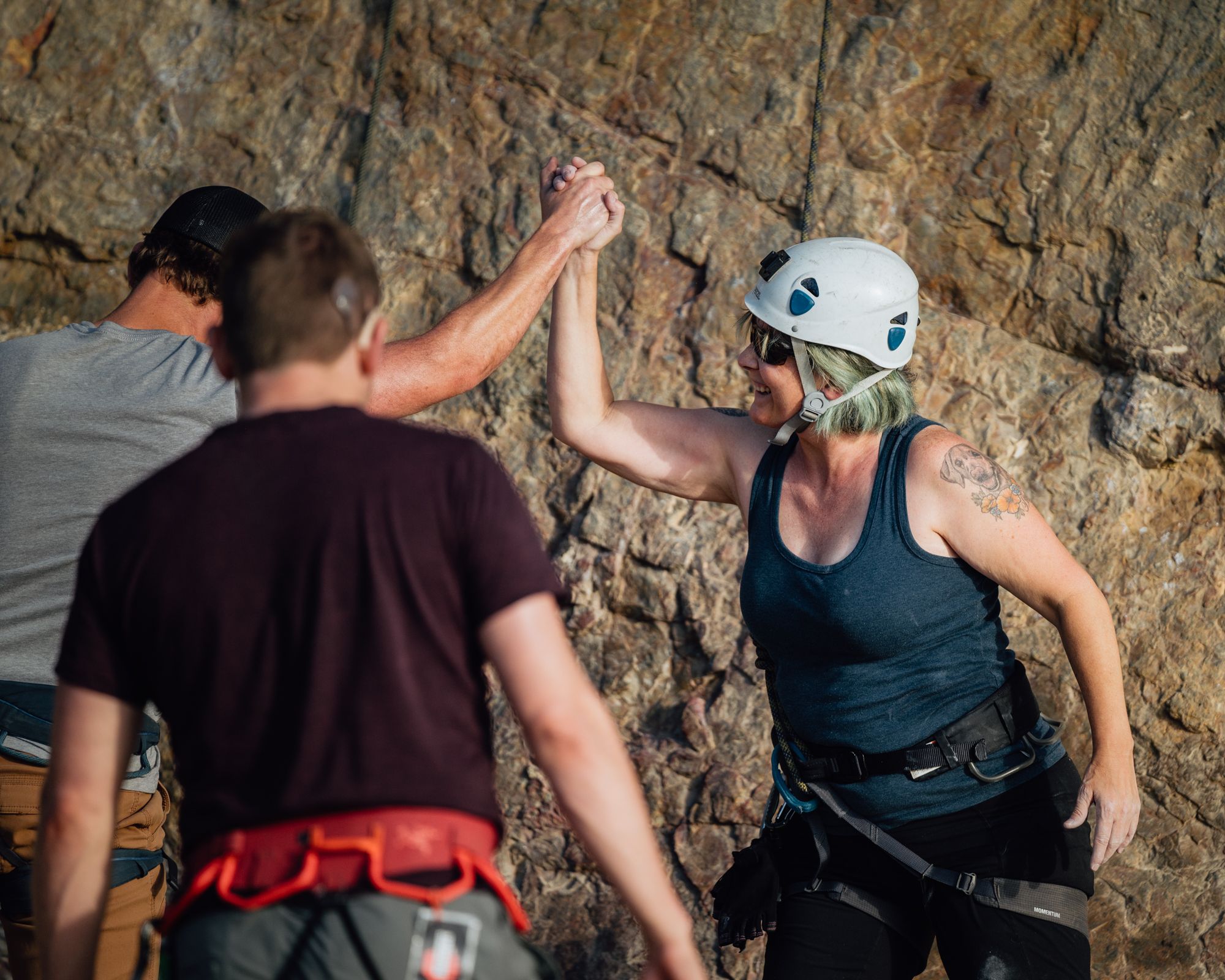
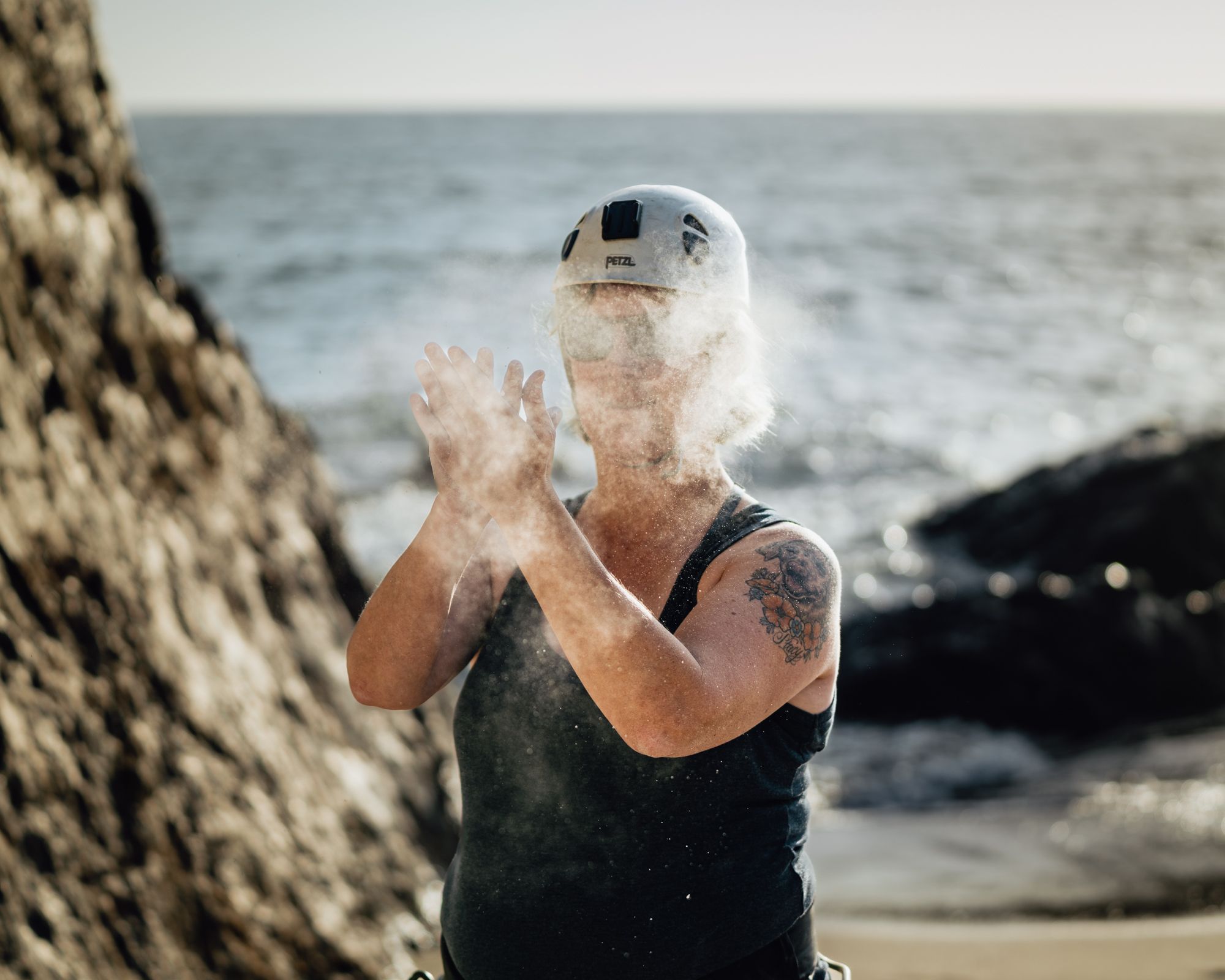
Sonya Wilson's goal is to build spaces and communities that promote Deaf culture. [Matthew Fults photos]
During a recent climb at Point Dume, California, Wilson’s group of deaf and hearing climbers established facial expressions, body language and signs for things like “ready,” “watch,” and “climb.”
“There’s never just one way to communicate,” Sonya says. “Situations change, group dynamics change. We’ve got to be willing to adapt. Deaf people are experts at adapting. So let a deaf person show you another way.”
She shares plenty of examples on Instagram.
Sonya has been busy planning an ASL climbing day for later this summer, along with once-a-month ASL group hikes.
Those outings are a chance to share not only outdoor adventures but experiences, ideas and resources.
“We really value our time together, and we need that space because most of us work out in the hearing world, and we need a break from that sometimes. In these outdoor spaces, our language is primary.
“Sometimes, people will share a frustration with a barrier or some sort of experience, and we can offer solutions on how to resolve the issue or break down that barrier.”
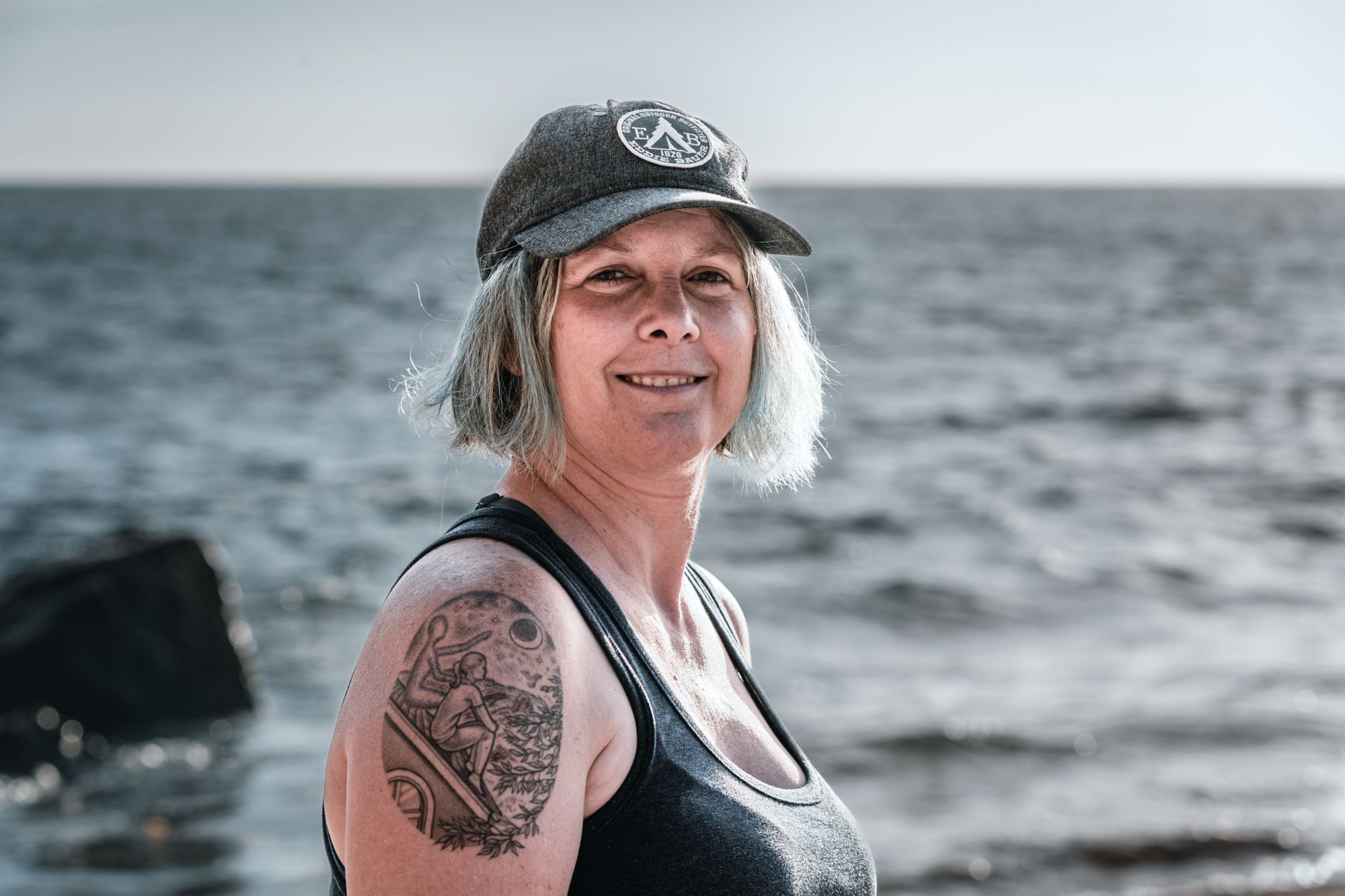
Sonya especially looks forward to the next ASL retreat weekend in Joshua Tree this fall. It’s a place that has become special to her over the years, sacred even, in part because it shares the vibe and connection that drew her onto the trails and rock faces of Red Rock Canyon as a kid.
The trees, the stars, the moonlit sky. The desert hills. They’ve always been there for her.
“I feel like Mother Earth is still following me in my journey, reminding me that I’m OK. That I’ll be fine.”